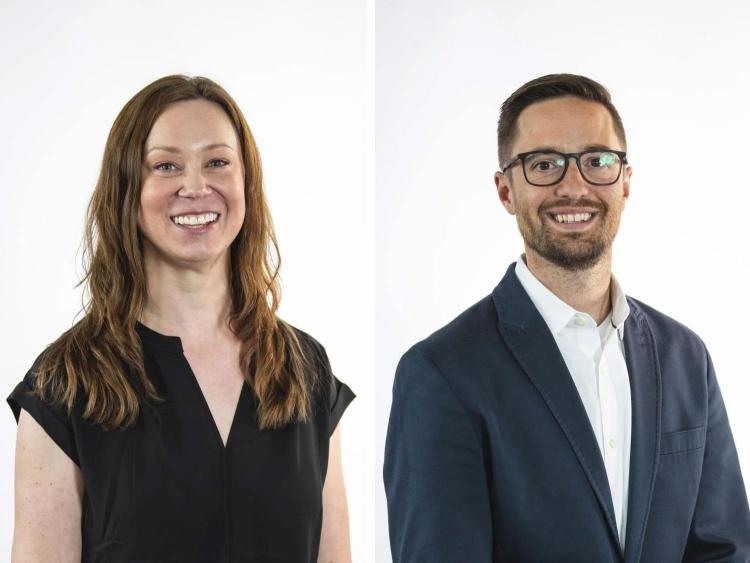Physicians to correct misconceptions about concussions
Let’s CU Well presentation on Dec. 14 by CU Medical Services doctors to talk about causes of concussions, diagnosis and treatments
John Breck and Tracy Casault are highly trained physicians with the University of Colorado Boulder Medical Services who have specialized expertise in sports medicine and the treatment of concussions.
As a result of that expertise, they essentially serve as “myth busters” about common misperceptions regarding concussions, specifically those suffered by CU Boulder students—and will bring that knowledge to an upcoming Let’s CU Well presentation on Dec. 14 at 9 a.m.
Just one example: The idea that concussions most commonly occur on the athletic fields. In reality, research done by Drs. Casault and Breck for a published study about four years ago showed that the majority of concussions among the general student population happened off the sports field.

At the top of the page: A man gets checked for a concussion. Above: Drs. John Breck and Tracy Casault will both speak at the upcoming Let's CU Well Presentation.
“We see all kinds of non-sports-related injuries,” Dr. Breck says of contributing causes. “Lots of what I would call standard falls—maybe down some stairs, slips on ice or slips in showers.
“Many times, it’s transportation-related accidents, so bike accidents or skateboard falls,” Dr. Casault adds. “Motor vehicle accidents also make up a percentage of that total. So, it’s not so much that they (students) were doing a sport, but they were in motion.”
Another finding from Dr. Breck and Dr. Casault’s research: That male and female CU Boulder students experience concussions in roughly equal numbers, whereas the common perception is that males tend to suffer concussions in greater numbers.
“A concussion doesn’t care if you are male or female,” Dr. Breck says. “These are actually more of a 50-50 injury, at least on our campus.”
Drs. Casault and Breck will offer additional insights related to student concussion diagnoses and treatment during their upcoming seminar, “Concussions on Campus.”
This event is scheduled as a Zoom presentation starting at 9 a.m. on Wednesday, Dec. 14. The event is free, but registration is required.
The event is part of the Let’s CU Well speaker series for CU staff, students and interested community members. The series is an offshoot of Be Well, a wellness initiative launched by the College of Arts and Sciences.
Drs. Breck and Casault say misconceptions about concussions are not surprising given that this type of injury has historically been misunderstood and in many cases went undiagnosed. Currently, universities nationwide are not required to track concussions among the general student populations, so there is no way to compare CU Boulder to other colleges. Even at CU Boulder—where Casault says CU Medical Services has made a priority to diagnose and treat concussions suffered by students—exact numbers are still difficult to ascertain.
A big part of the challenge is that symptoms for concussions don’t typically present in a standardized way for an easy diagnosis, and there is not an easy blood test that can quickly identify an injury as a concussion, according to Drs. Casault and Breck.
When: 9 a.m. Dec. 14, virtually
Tickets: Virtual event is free and open to the public, but registration is required.
“We have a saying for this type of care: When you’ve seen one concussion—you’ve seen one concussion,” Dr. Casault says. “Every patient presents slightly differently. Even though the majority of the time there is going to be a headache associated with the injury, even that is not 100%. So there is a lot of clinical diagnosis involved, where we gather information on the reported injury, evaluate any symptoms and attempt to piece everything together.”
“One thing to point out with this injury is that there isn’t an easy test, like a blood test, that we can use to say, ‘this person has a concussion,’” Dr. Breck adds.
Likewise, treatment must be individualized for each person suffering from a concussion, they say.
Other points Drs. Casault and Breck say they plan to talk about include mechanisms by which concussions happen, common symptoms that faculty or staff might want to watch for in students, how medical providers on campus collaborate on diagnosis and treatment, and just a bit about treatment options.
For context, Dr. Breck says he and Dr. Casault will present national figures on concussions, which have increased in recent years. At first glance, an increase in reported concussions might seem concerning, but Dr. Breck says the increase may have as much to do with the public’s growing awareness about concussions, which is a positive development, as it does with any increase in incidence.

